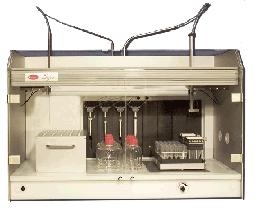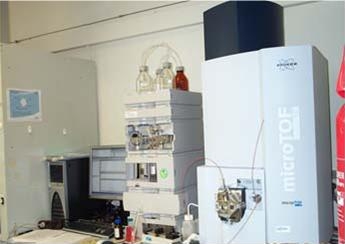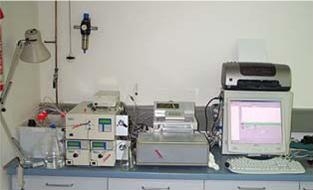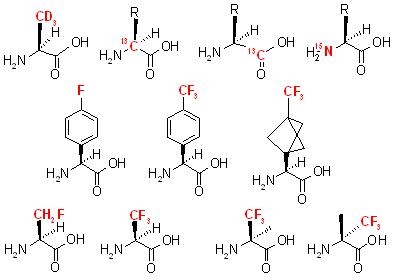PepSy-Labs
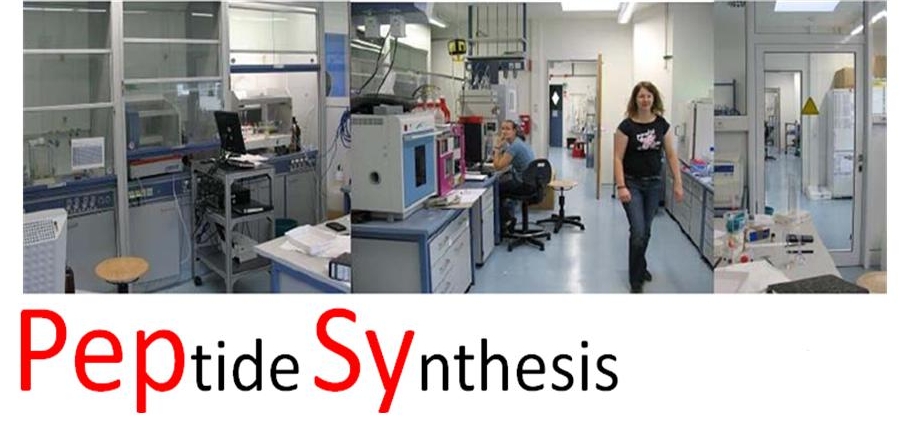
We perform solid phase peptide synthesis of peptides following Fmoc/tBu strategy either manually or using several automated peptide synthesizers which are capable of producing difficult or series of peptides with site specific labeling for their structure-function analysis.
(a) To synthesize difficult peptides on large scale we employ microwave based peptide synthesizer (model liberty from CEM) or an ABI 433a synthesizer from applied biosystems
(b) To synthesize several peptides bearing a 19F-labeled amino acid or commonly used isotope labeled aminio acids we use multiple synthesizer ( up to 48 peptides on a Multisyntech syroII) synthesizer in relatively small to medium scale (100µM)
In addition we also use SPOT-synthesis (available from Intavis), which affords several thousands of peptides tethered on a cellulose paper most often employed for screening several peptides simultaneously for their antimicrobial activity.
Peptides are purified over preparative HPLC and their purity and identity is determined by using analytical LCMS. We routinely synthesize WT-peptides or 2H-, 13C-, 15N-isotope labeled analogues in addition to several selective 19F-labeled analogues using 19F-labeled amino acids as shown in Fig.1 These peptides are screened for their structure (using CD spectroscopy) and biological function (antimicrobial, cell penetrating or fusogenic activity). We also label peptides with several fluorophores required for cell uptake, FRET- assays or for fluorescence based biological investigations.
Most of our investigated peptides belong to the class of membrane active peptides and are investigated in their membrane bound form using solid state NMR and CD spectroscopic techniques. Several antimicrobial peptides and their derivatives that we have studied in their functional state include PGLa. Magainin 2, BP100, MSI-103, alamethicin, Gramicidin S etc.
Likewise, a continual focus of our group is to understand the functional mechanism of several cell-penetrating peptides like MAP, SAP, Transportan, HIV-TAT, K8, R8 in order to obtain not only the design rules for functional cell penetrating peptides but also to obtain cargo (and target) specific cell penetrating sequences. We are also interested in understanding fusogenic peptides and have studied a two fusogenic peptides in detail i.e. B18, HIV-FP23
We are also interested in determining:
(a) Interchangeable roles of antimicrobial, cell penetrating and fusion peptides.
(b) Role of aggregation on the biological activity of a peptide
(c) Residue/environment/concentration dependent aggregation behavior of a peptide

